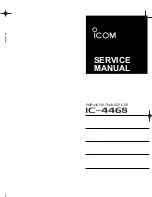
4200 Series Transmitters
Instruction Manual
Form 5596
November 2006
10
5. Attach the mounting plate to the actuator using
hex head cap screws (key 75). Note: Some
actuators may require spacers (key 101) between
the mounting plate (key 63) and the actuator.
CAUTION
Free release of the cable (key 100B)
will damage the transducer. Whenever
the cable (key 100B) is extended, take
steps to ensure that free release does
not happen.
6. Carefully pull the cable (key 100B) down to the
cable clip (key 61) and attach it with the socket head
cap screw (key 102), the lock washer (key 83) and
the nut (key 72).
7. Remove the four cap screws (key 100D) and the
mounting plate (key 100C) from the cable
transducer.
8. Mount the mounting plate (key 100C) to the
transmitter using cap screws (key 105).
9. Verify that the actuator is still in the mid-stroke
position. Loosen the socket cap screws (key 100F)
and rotate the coupling until the socket cap screws
(key 100F) can be accessed with a hex wrench
through one of the openings in the cable transducer
housing (key 100A). Lock the coupling in place by
tightening the inboard socket cap screw (key 100F).
10. Turn the potentiometer shaft (key 5) to the
midpoint of it’s range.
11. Carefully install the transmitter to the cable
transducer housing (key 100A) making sure that the
potentiometer shaft (key 5) slides freely into the
coupling (key 100E) and remains in the midpoint
position. Reinstall the four cap screws (key 100D).
12. Lock the coupling (key 100E) to the
potentiometer shaft (key 5) by tightening the outer
socket cap screw (key 100F).
13. Install the lower yoke cover (key 69) on to
actuator yoke with pan head machine screws
(key 77) and washers (key 86).
14. Perform the electrical connections.
Electrical Connections
WARNING
Select wiring and/or cable glands that
are rated for the environment of use
(hazardous area, ingress protection
and temperature). Failure to use
properly rated wiring and/or cable
glands can result in personal injury or
property damage from fire or
explosion.
Note
For North American intrinsically safe
installations, refer to the loop
schematics shown in figures 24 and 25
or to instructions supplied by the
barrier manufacturer for proper wiring
and installation. For all other
applications install the product per
local, regional, or national code, rules,
and regulations.
Conduit
Install conduit using local and national electrical
codes which apply to the application.
Field Wiring
Figure 4 shows typical field wiring connections into
the field wiring compartment. The transmitter is
powered by 24 volts dc. Refer to table 1 to
determine the power supply requirements. For units
without position switches, the 24 volts dc can be
provided by the receiving device or an external
supply.
For units with position switches, the power supply
provides 24 volt dc power to the position switch
circuit in units without the transmitter, or to both the
position switch circuits and transmitter in units with
the transmitter. A 24 volt dc power supply
independent of the receiving device is
recommended. A separate return is required for the
relays. This prevents relay return currents from
flowing in the transmitter 4 to 20 mA dc current loop.
For the position switch relay wiring, during normal
operating conditions relays K1 and K2 are
energized, which connects the common (C) terminal
to the normally open (NO) terminal (TB1 and TB2,
figure 4). During a tripped (or alarm) condition the
relay is de-energized, which connects the C terminal
to the normally closed (NC) terminal. If power is
removed or lost from the power supply both relays
are de-energized which connects the common (C)
terminals to the normally closed terminals (NC).











































